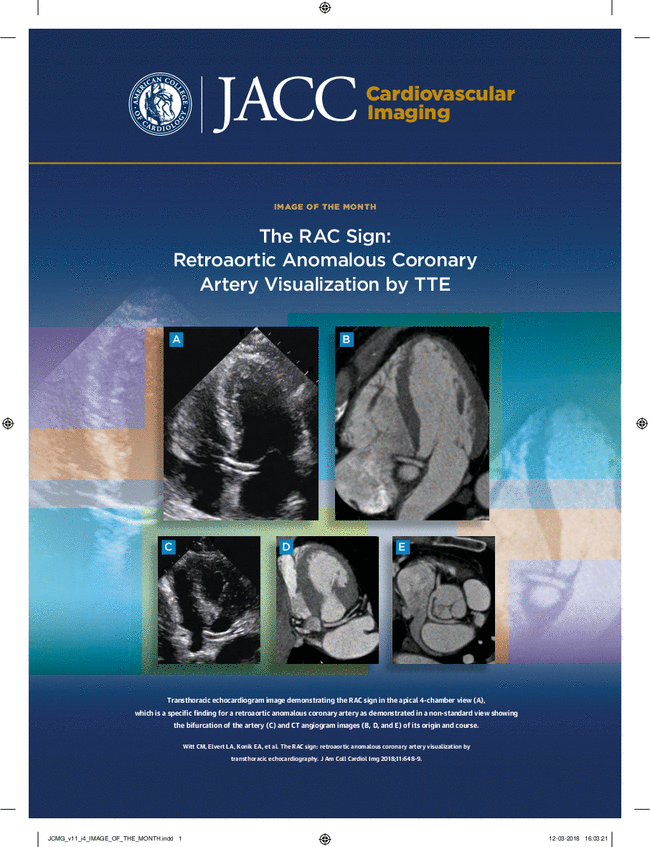Myocardial Strain Imaging
IF 12.8
1区 医学
Q1 CARDIAC & CARDIOVASCULAR SYSTEMS
引用次数: 0
Abstract
Myocardial strain imaging by echocardiography or cardiac magnetic resonance (CMR) is a powerful method to diagnose cardiac disease. Strain imaging provides measures of myocardial shortening, thickening, and lengthening and can be applied to any cardiac chamber. Left ventricular (LV) global longitudinal strain by speckle-tracking echocardiography is the most widely used clinical strain parameter. Several CMR-based modalities are available and are ready to be implemented clinically. Clinical applications of strain include global longitudinal strain as a more sensitive method than ejection fraction for diagnosing mild systolic dysfunction. This applies to patients suspected of having heart failure with normal LV ejection fraction, to early systolic dysfunction in valvular disease, and when monitoring myocardial function during cancer chemotherapy. Segmental LV strain maps provide diagnostic clues in specific cardiomyopathies, when evaluating LV dyssynchrony and ischemic dysfunction. Strain imaging is a promising modality to quantify right ventricular function. Left atrial strain may be used to evaluate LV diastolic function and filling pressure.
心肌应变成像:理论、当前实践与未来。
通过超声心动图或心脏磁共振(CMR)进行心肌应变成像是诊断心脏疾病的一种有效方法。应变成像可测量心肌的缩短、增厚和延长,可应用于任何心腔。通过斑点追踪超声心动图测量的左心室(LV)整体纵向应变是临床应用最广泛的应变参数。目前已有几种基于 CMR 的模式可用于临床。应变的临床应用包括在诊断轻度收缩功能障碍时,全局纵向应变是比射血分数更敏感的方法。这适用于左心室射血分数正常的心力衰竭疑似患者、瓣膜病的早期收缩功能障碍,以及在癌症化疗期间监测心肌功能时。在评估左心室不同步和缺血性功能障碍时,节段性左心室应变图可为特定心肌病提供诊断线索。应变成像是一种很有前景的量化右心室功能的方法。左心房应变可用于评估左心室舒张功能和充盈压。
本文章由计算机程序翻译,如有差异,请以英文原文为准。
求助全文
约1分钟内获得全文
求助全文
来源期刊

JACC. Cardiovascular imaging
CARDIAC & CARDIOVASCULAR SYSTEMS-RADIOLOGY, NUCLEAR MEDICINE & MEDICAL IMAGING
CiteScore
24.90
自引率
5.70%
发文量
330
审稿时长
4-8 weeks
期刊介绍:
JACC: Cardiovascular Imaging, part of the prestigious Journal of the American College of Cardiology (JACC) family, offers readers a comprehensive perspective on all aspects of cardiovascular imaging. This specialist journal covers original clinical research on both non-invasive and invasive imaging techniques, including echocardiography, CT, CMR, nuclear, optical imaging, and cine-angiography.
JACC. Cardiovascular imaging highlights advances in basic science and molecular imaging that are expected to significantly impact clinical practice in the next decade. This influence encompasses improvements in diagnostic performance, enhanced understanding of the pathogenetic basis of diseases, and advancements in therapy.
In addition to cutting-edge research,the content of JACC: Cardiovascular Imaging emphasizes practical aspects for the practicing cardiologist, including advocacy and practice management.The journal also features state-of-the-art reviews, ensuring a well-rounded and insightful resource for professionals in the field of cardiovascular imaging.
 求助内容:
求助内容: 应助结果提醒方式:
应助结果提醒方式:


